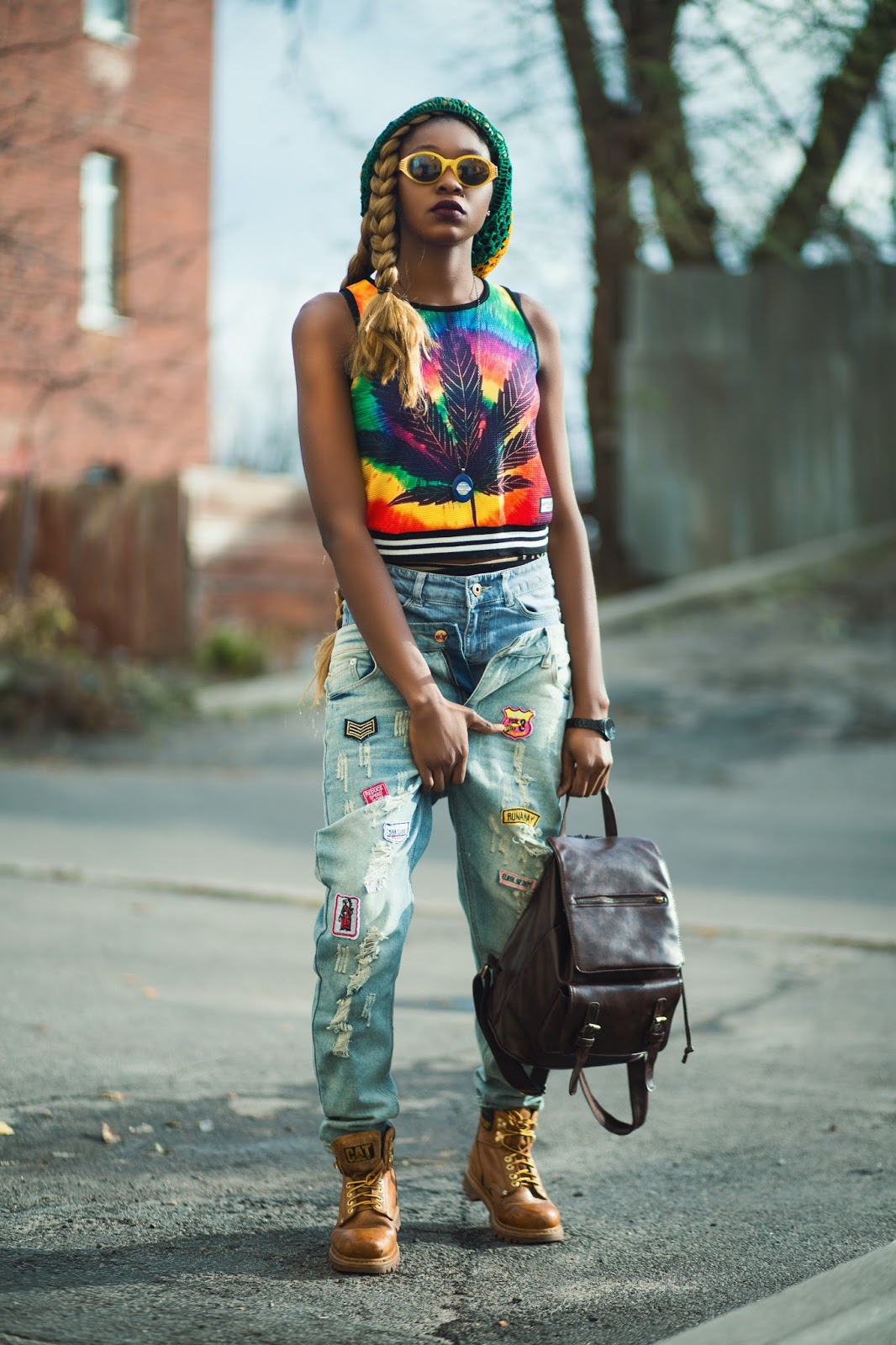Rastafarian attire is more than just clothing; it represents a rich cultural heritage, a spiritual movement, and a lifestyle deeply intertwined with the values of peace, love, and unity. Originating in Jamaica during the 1930s, this distinctive style reflects the Rastafarian philosophy, which emphasizes the importance of connection to one's roots, nature, and the divine. The clothing worn by Rastafarians is characterized by its vibrant colors, unique patterns, and the use of natural materials, all of which play a significant role in expressing identity and beliefs.
The Rastafarian movement is deeply influenced by the teachings of Marcus Garvey, who advocated for the empowerment and repatriation of people of African descent. As such, Rastafarian attire often incorporates symbolic colors such as red, gold, and green, which represent the blood of martyrs, the wealth of Africa, and the lushness of the continent, respectively. This attire serves as a visual representation of the struggles and triumphs of the African diaspora and provides a sense of pride and belonging for those who embrace the Rastafarian lifestyle.
In this article, we will delve into the various elements of Rastafarian attire, exploring its historical significance, key components, and how it has evolved over time. We will also answer some common questions about this fascinating cultural expression, offering insights into its meanings and the ways in which it continues to inspire individuals around the world.
What are the Key Elements of Rastafarian Attire?
Rastafarian attire is characterized by several key elements that reflect its cultural and spiritual significance:
- Colors: The iconic red, gold, and green colors are a vital part of Rastafarian clothing, symbolizing various aspects of life and history.
- Natural Fabrics: Clothing is often made from natural materials such as cotton, linen, and hemp, emphasizing a connection to nature.
- Loose-fitting Garments: Comfort is paramount in Rastafarian attire, with many opting for loose-fitting, breathable clothing that allows for ease of movement.
- Headwear: The wearing of hats or head wraps, particularly the iconic Rastafarian beanie or 'rasta hat,' is a common element, often adorned with the signature colors.
How Has Rastafarian Attire Evolved Over Time?
Over the decades, Rastafarian attire has evolved, influenced by various global fashion trends while maintaining its core elements. Early Rastafarians wore simple, handmade garments that reflected their rejection of Western materialism. However, as the movement gained prominence, Rastafarian attire began to incorporate more vibrant designs and patterns, often inspired by African textiles.
Today, Rastafarian clothing can be found in various styles and forms, from traditional handmade garments to contemporary fashion pieces that pay homage to the movement. The global popularity of reggae music and the influence of iconic figures such as Bob Marley have also contributed to the mainstream acceptance and appreciation of Rastafarian fashion.
Who Are the Key Figures in Rastafarian Fashion?
One of the most prominent figures in the realm of Rastafarian attire is Bob Marley, whose style and image have become synonymous with the movement. His influence extended beyond music, as he embraced and promoted Rastafarian culture through his clothing choices and public appearances. Below is a brief biography and personal details of Bob Marley:
| Detail | Information |
|---|---|
| Full Name | Robert Nesta Marley |
| Date of Birth | February 6, 1945 |
| Place of Birth | Nine Mile, Jamaica |
| Date of Death | May 11, 1981 |
| Occupation | Musician, Singer-Songwriter |
| Notable Works | “No Woman, No Cry”, “One Love”, “Three Little Birds” |
What Role Does Music Play in Rastafarian Attire?
Music is an integral part of Rastafarian culture, and it significantly influences the way Rastafarian attire is perceived and worn. Reggae music, in particular, has played a pivotal role in popularizing Rastafarian fashion around the globe. Artists like Bob Marley and Peter Tosh have used their platforms to showcase their cultural identity through their clothing choices, encouraging fans to embrace the Rastafarian lifestyle.
At reggae festivals and events, attendees often dress in Rastafarian attire as a form of expression and solidarity with the movement. The music acts as a unifying force, bringing together people from diverse backgrounds who resonate with the values and messages conveyed through Rastafarian culture.
How Can You Incorporate Rastafarian Attire into Your Wardrobe?
If you're looking to incorporate Rastafarian attire into your wardrobe, here are some tips to consider:
- Start with the Colors: Include red, gold, and green in your outfits, whether through clothing, accessories, or footwear.
- Choose Natural Fabrics: Opt for clothing made from cotton, linen, or hemp for a comfortable and eco-friendly choice.
- Embrace Loose-Fitting Styles: Look for relaxed silhouettes that allow for freedom of movement.
- Accessorize Wisely: Incorporate hats, scarves, or jewelry that reflect Rastafarian colors and symbols.
What Are Some Common Misconceptions About Rastafarian Attire?
Despite its growing popularity, there are several misconceptions surrounding Rastafarian attire. Some common misunderstandings include:
- All Rastafarians Wear Dreadlocks: While many Rastafarians do choose to wear dreadlocks as a spiritual symbol, not all individuals in the movement do.
- Rastafarian Attire is Only for Reggae Fans: Rastafarian attire transcends music and is a representation of culture, identity, and spirituality.
- Rastafarian Culture is Monolithic: The Rastafarian movement is diverse, with various sects and interpretations, leading to different styles and expressions of attire.
Conclusion: The Significance of Rastafarian Attire
Rastafarian attire serves as a powerful expression of identity, culture, and spirituality. Through its vibrant colors, natural fabrics, and unique designs, it conveys a deep sense of connection to heritage and the struggles of the African diaspora. As the world continues to evolve, Rastafarian attire remains a symbol of unity, peace, and love, inspiring individuals to embrace their roots and celebrate their individuality. Whether through music, fashion, or personal expression, Rastafarian attire will continue to resonate with those who seek to honor its rich legacy.


